For businesses, water usage is more than utility line items. It’s a cost center and a sustainability metric. Especially when water is used on a large scale, such as in agriculture and factories. Whether the business is managing an industrial site or a commercial facility, understanding how to read a water meter is one of the most efficient ways to ensure that the charges align with the usage, as well as to detect leaks and possible water system failures before they happen.
The point is that water flow meters can be overlooked until there is a problem, like a massive bill spike. Depending on the business type, operation, and size, an unnoticed leak in a cooling system, for example, can waste thousands of gallons per day and go unnoticed for weeks. So, investing in a water meter can help businesses:
- Detect leaks early, before being surprised by high water bills;
- Compare usage across departments;
- Reduce water waste by tracking undetected plumbing failures;
- And prevent damage to assets caused by undetected plumbing failures.
According to the government of British Columbia, water meters can help reduce water use by up to 30%, resulting in lower bills and more water staying in rivers and lakes. It is a sustainable practice for any business niche in many ways.
| Water Meters = Savings | |
| Leak Detection | Catching running toilets, pipe leaks, and faulty valves early |
| Behavioural Changes | People tend to reduce waste when they know they are being monitored |
| Process Optimization | Tracking water use helps fine-tune cleaning, cooling, or irrigation |
| Peak Usage Management | Avoiding fines or waste from excessive short-term use |
| Accountability | Tracking water use helps fine-tune cleaning, cooling, or irrigation |
Water Meter Check
Regardless of which water meter is used (analog, smart, digital, or any other), for high-traffic commercial facilities, the recommendation would be a weekly or bi-weekly water meter reading, especially for properties with irrigation systems (farms, for example), cooling towers, or older infrastructure, that can eventually present leaks.
To be even more proactive and avoid any surprises, setting up a simple spreadsheet to track usage over time can be a smart move, as doing so will make it possible to track spikes or any behaviour change. But let’s go back to the main topic and talk about how to read a water meter step-by-step.
How to read a water meter in Canada
1) Locate the water meter
Usually, it is installed near the main incoming water line, which could be a utility room, inside a meter vault outside the building, near the boiler room, water treatment plant, or main pump station. Larger facilities may also have sub-meters for specific departments or processes.
2) Understanding the goal
What is your company looking for? Your business typically has analog (mechanical) water meters, smart or digital ones (we talk about each one and its particularities below). If analog, they have rotating number wheels and may also have a large sweep hand (dial) and small test dials. If digital, it shows readings on an LCD screen and often cycles through different screens indicating total usage, flow rate, and diagnostics.
Another well-known option is the smart meter, which sends data wirelessly to the utility or a central system, and has a display for manual checks.
3) Reading usage
For Analog Meters, you should read the numbers from left to right, ignoring any decimals or red digits unless the company wants a more precise number. Example: if it shows 000478.5, you use 478 cubic meters as a base (or gallons check unit).
For meters with multiple dials, read each dial in order. Write down the number the needle just passed.
For Digital Meters, turn on the screen, and find the “Total Volume” screen. Units are usually m2, liters, or gallons. Same as smart meters.
4) Track usage over time
Record the reading at the same time daily, weekly, or monthly, depending on the business needs. Compare readings to spot spikes in usage, process efficiency, utility bills verification, and equipment issues to catch up in advance.
The Most Common Types of Water Meters
Analog or Mechanical Water Meters
This type has been used for decades in old homes, basic commercial setups, and anywhere that hasn’t been upgraded to smart technology. It is simple to identify a mechanical one. If you open a water meter box and see a dial with moving hands or a row of rotating numbers, that is an analog water meter.
To better understand how it works, while it is being used, the water flows through the meter, turning a mechanical component (usually a paddle wheel or piston), which moves the dials or rollers that record usage. Some meters also include a small red triangle or gear known as a leak indicator, which moves even with the tiniest water flow.
Pros: Simple to read with practice, no batteries or electronics to fail, good durability.
Cons: Not so precise for low rates, no remote monitoring, and requires manual reading.
Digital Water Meters
These meters, as the name suggests, have an electronic water meter screen that displays your water usage in gallons, cubic feet, or litres. They are becoming more common in both homes and commercial properties as utilities modernize their infrastructure.
Instead of the mechanical parts, digital meters use sensors (magnetic or ultrasonic) to measure flow. The data is shown on a screen which may be activated by a button, sunlight, or movement. They are often used in newer places, buildings with recent meter upgrades, and smart city infrastructure.
Pros: Easy-to-read display, more precise at detecting small flows, often used with automatic or remote reading systems.
Cons: Some options that need battery or external power can be harder to troubleshoot, and may not work if the display fails (water meter replacement needed).
Electromagnetic Water Meter
In this option, when water flows through a magnetic field, it generates a voltage (which is proportional to the water’s velocity), and the meter calculates the volume accordingly. It can be useful for wastewater treatment, industrial processes with conductive fluids, or corrosive water environments.
Pros: High accuracy, not affected by temperatures, pressure, or viscosity, and ideal for non-clean water.
Cons: Needs a power source, more expensive than mechanical meters, and only works with conductive liquids.
Ultrasonic Water Meter
The equipment uses ultrasonic sound waves to measure flow. The Transit-Time option measures the time difference between signals moving against the flow. The Doppler option measures frequency shift due to particles or bubbles in the water. Useful for residential and commercial smart water metering and clean water systems.
Pros: Highly accurate, ideal for remote or smart metering, and minimal pressure drop.
Cons: High cost; some models can be sensitive to pipe and installation conditions.
Smart Water Meters
The smart water meter incorporates digital sensing and communication technology, and can be based on ultrasonic, electromagnetic, or other meter types. As it is equipped with wireless communication, it is possible to monitor anywhere, inside and outside the company.
Pros: Remote reading, real-time monitoring and alerts, supports conservation program.
Cons: Expensive installation, requires communication infrastructure, may raise privacy concerns.
Submetering Meter
If your portfolio includes multiple locations or buildings, consider implementing a submetering strategy or digital monitoring platform. The more granular the data is, the easier to identify waste, allocate costs, and respond quickly to issues.
Basically, submetering is the practice of installing additional water meters (sub-meters) to measure water usage in specific parts. Rather than using one big main meter to track total usage, submetering helps the company to track where water is being used, by area, department, and equipment. That’s a good way to find out which equipment or department is using the most water, and to detect leaks in a faster way as well.
Another option is scheduling meter checks, leak audits, or integration with smart metering systems that provide 124/7 insights and track not only the water usage by zone, but also flag irregularities automatically.
Water Meter Companies in Canada (Products and Services)
QMC
QMC supplies the best smart water meters for residential, commercial, and institutional applications in Canada. They provide products that ensure NTEP, MID, AWWA, and NSF-61 compliance for any meter used for utility management and billing consumption.
Intellimeter
Intellimeter offers sub-metering systems to provide detailed, real-time information on Electricity, Water, Gas, and Thermal Energy consumption. Their i-meter-Energy Analysis cloud-based software is the gateway to intelligent information for clients.
Grainer
Grainer is, according to their website, Canada’s largest industrial supplier. They offer a large selection of private-label and brand-name water meters from the world’s manufacturers and work alongside many companies across Canada.
Neptune
With all products and services made in America, Neptune offers products such as lead-free, bronze-body water meters to advanced radio frequency technologies, to industry-leading software solutions.
Canada Utility Management
Canada Utility Management installs and maintains submeters, which are allowed by law, and creates customized ratio utility billing solutions, where permitted by law, for properties where submeter installation is not possible.
Badger Meter
The Badger Meter metering technologies help clients to monitor and understand the flow operations from improving efficiencies to addressing equipment issues before they result in downtime.
Where Water Meters Are and Aren’t Mandatory
Is using a water meter mandatory in Canada? The answer is: depending on the city. That is because the water metering is regulated at the municipal level, not provincial, and the deployment varies according to the water concerns and goals, such as conservation, infrastructure, scarcity concerns, and historical practices.
Here Are The Provinces Where The Water Meter Is Mandatory
- Alberta
- Ontario
- British Columbia (not mandatory for older homes)
- Saskatchewan
- Manitoba
Provinces And Cities Where The Water Meter Is Not Mandatory
In Quebec:
- Montreal
- Quebec City
- Gatineau
- Sherbrooke
- Trois-Rivieres
In Newfoundland and Labrador:
- St. John’s
- Corner Brook
- Gander
- Mount Pearl
In Prince Edward Island:
- Charlottetown
- Summerside
- Stratford
In Yukon:
- Whitehorse
- Dawson City
- Watson Lake
Reviewing industrial water treatment options and costs
Looking to repair your equipment or reduce your water costs? EnergyRates.ca can help you review and reduce your utility costs beyond water usage. Our experienced team of energy and water consultants can support you in comparing industrial water treatment plans for your commercial, large commercial or industrial operations.
Contact us or call us at 1-855-635-9608 for a custom quote based on your energy needs.











